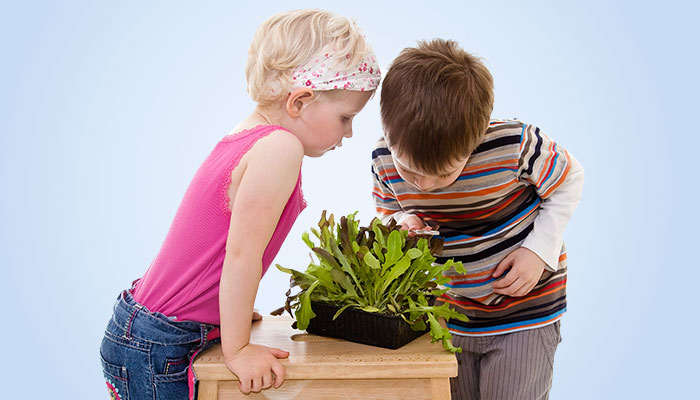While we believe that the books and resources recommended may be of value to you, keep in mind that these are suggestions only and you must do your own due diligence to determine whether the materials are appropriate and suitable for your use. PNC has no sponsorship or endorsement agreement with the authors or publishers of the materials listed.
SPRING

Parts of a Plant
Children will learn the different parts of a plant.

Lesson Objective
The children will learn the basic parts of plants (roots, stems, leaves, flowers, and seeds) and the function of each part.
Science
What You'll Need
- 4 different simple flowering houseplants (such as an African violet, amaryllis, poinsettia, gardenia, impatiens, jasmine, geranium, oxalis, or daisy)
- Artificial flowers – 1 per child
- Paper
- Crayons
- Magnifying glasses (1 for every 2 children)
- Diagram of a plant that has been labelled (roots, stem, leaves, flowers, seeds – see Lesson Tips)
What To Do
- Display the flowering houseplants. Ask the children to describe what is the same or different about the plants.
- Remove one of the plants from the container so the children can see the roots. Allow time to examine the plant with magnifying glasses.
- Using the diagram, point out the different parts of the plant: roots, stem, leaves, flowers, and seeds. Explain each part of the plant and the different job each part does to help the plant grow (see Did You Know?).
- Distribute artificial flowers and allow time to play with them.
- Show the children how to take the flowers apart and inspect the different parts of the flower.
- Have the children draw a plant, encouraging them to include the different plant parts. Have children take turns presenting their drawings.
Resources
Home School Resources
Home educators: use these printable lesson PDFs to teach this lesson to your home schoolers. They're available in English and Spanish.
Content Provided By
Common Core State Standards Initiative – These lessons are aligned with the Common Core State Standards ("CCSS"). The CCSS provide a consistent, clear understanding of the concepts and skills children are expected to learn and guide teachers to provide their students with opportunities to gain these important skills and foundational knowledge [1]. Visit the CCSS


